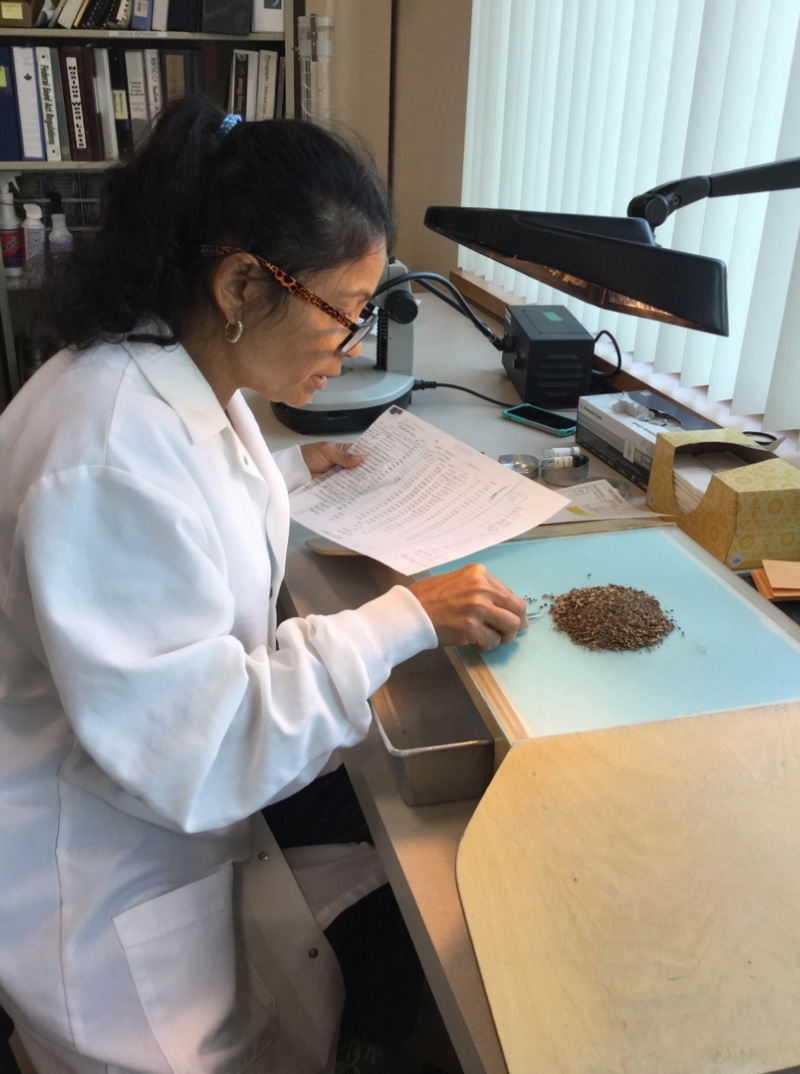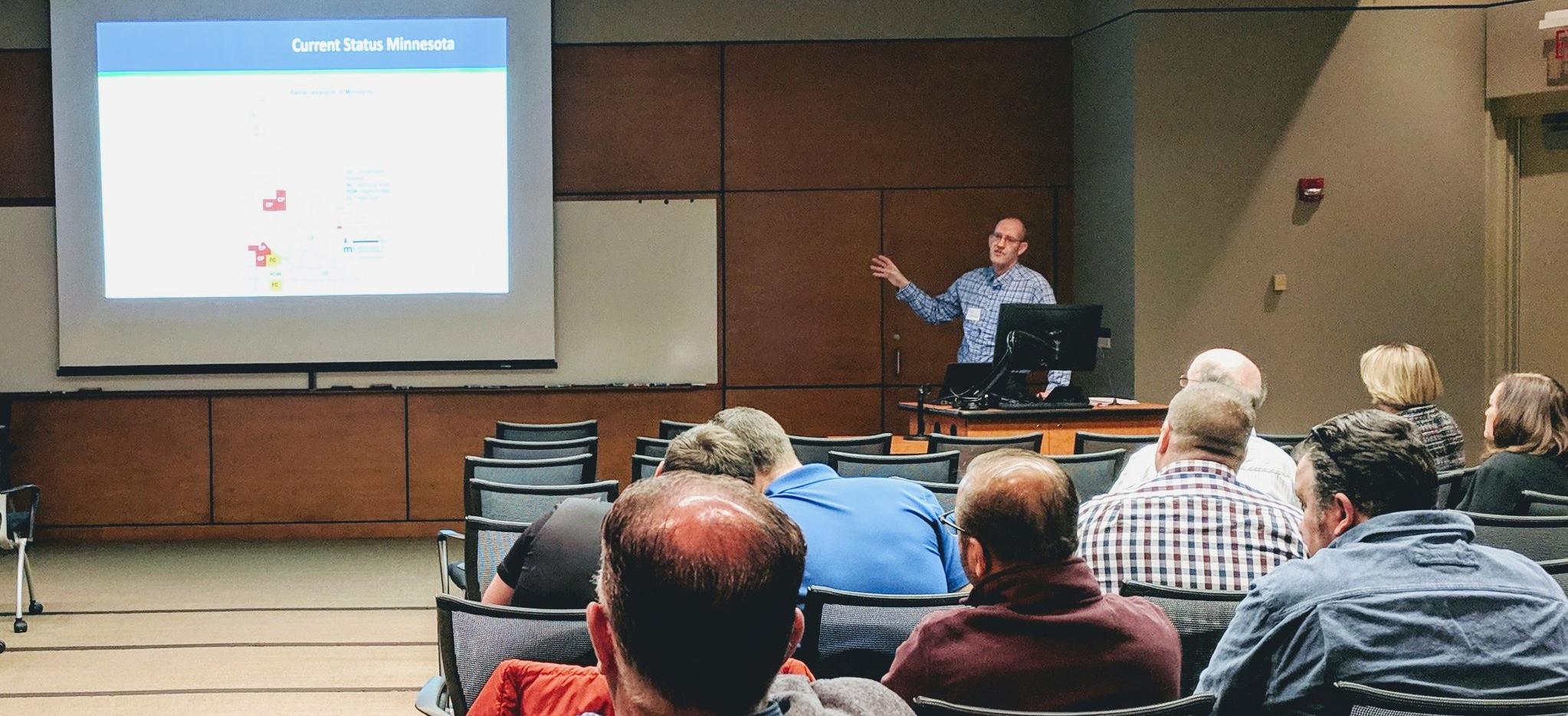
February 6, 2019
by DANA D'AMICO | Communications Specialist, MITPPC
The Palmer Summit brought together experts from across the Midwest to discuss one of agriculture's most noxious invasive weed threats.
Last month, the Minnesota Invasive Terrestrial Plants & Pests Center (MITPPC) and Minnesota Department of Agriculture (MDA) co-sponsored a joint Palmer Summit event at the University of Minnesota. Experts gathered from across states and industries to discuss how to manage Palmer amaranth, a weed so noxious it can grow several inches in a single day and disperse up to a million seeds in the course of its lifetime.
MITPPC is currently funding work forecasting the expansion of Palmer in changing environmental conditions so state agencies and land managers can stay ahead of the threat. The Center is also exploring new ways to keep Palmer seeds out of native seed mixtures used in conservation plantings.
Presenters from MDA, the University of Wisconsin-Madison, Minnesota Board of Water & Soil Resources, North Dakota Department of Agriculture and others delivered talks in the morning, which viewers can watch at home via the official MITPPC Youtube channel. Below is a summary of some of the day’s discussions.
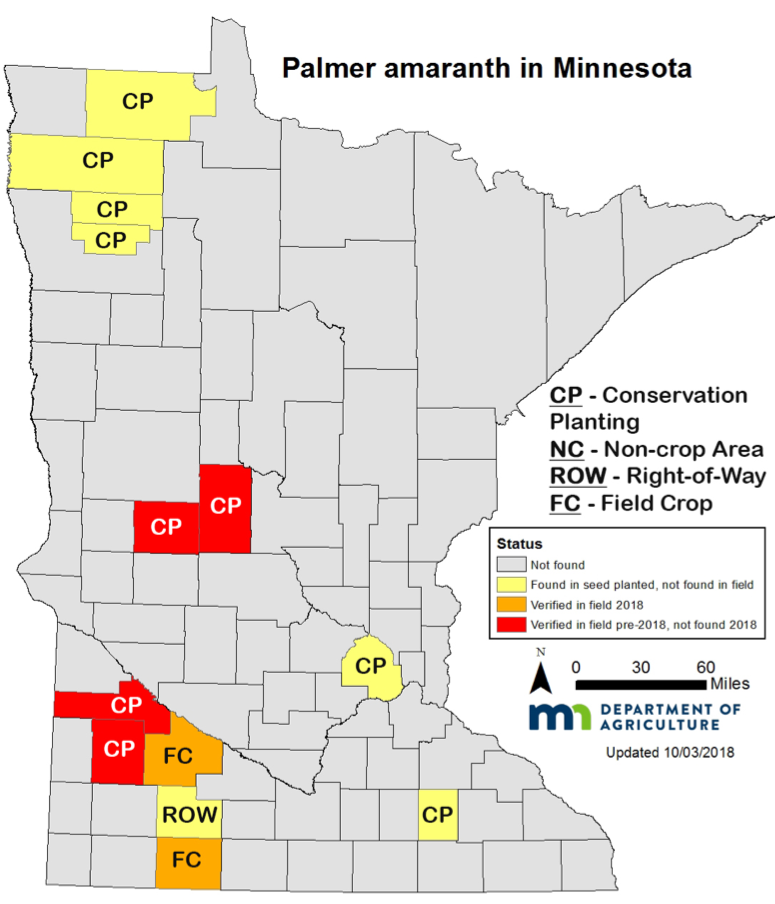
Tracking Palmer amaranth in Minnesota
Palmer amaranth in Minnesota started with just one pathway of spread – a single company selling contaminated native seed mix for conservation plantings. Nearly two years later, Palmer continues to spread by other means, including via humans, equipment, livestock, hay, forage and feed. In 2018, Palmer was reported at 44 sites across 6 counties. This includes the first sightings of Palmer in soybean fields. MDA's Noxious Weed and Hemp Unit Supervisor Tony Cortilet discusses Minnesota's response to date.
How can you help slow the spread?
-
Learn how to identify Palmer and how it differs from other common pigweeds and waterhemp.
-
If you suspect a Palmer plant, record its location and contact UMN Extension and/or MDA immediately.
-
Coordinate with BWSR and MDA to accurately read labels and monitor sourcing of seeds components for seed mixes.
Watch Tony's presentation on YouTube (18 min)
Fostering strong communication ties for better management
Palmer amaranth is one of the most difficult weeds to manage in the field. It has already shown resistance to five major classes of herbicides across the U.S.. Combine the challenge of resistance with an aggressive growth rate, prolific seed production, prolonged emergence and peak heights of 6-8 feet, and yield losses can reach 80-90% for corn and soy growers. UMN Weed Science Extension specialist Jeff Gunsolus believes the key to stopping an invader as aggressive as Palmer lies in community cooperation, coordination and communication.
How can you work within your community to manage Palmer amaranth?
- Report sightings as soon as they happen to prevent spread.
- Adopt a zero tolerance policy for Palmer.
- Talk to your neighbor about Palmer amaranth and your plan for management.
- Develop a "triangle of trust" between consultants and farmers, MDA and UMN Extension.
Watch Jeff's presentation on YouTube (16 min)
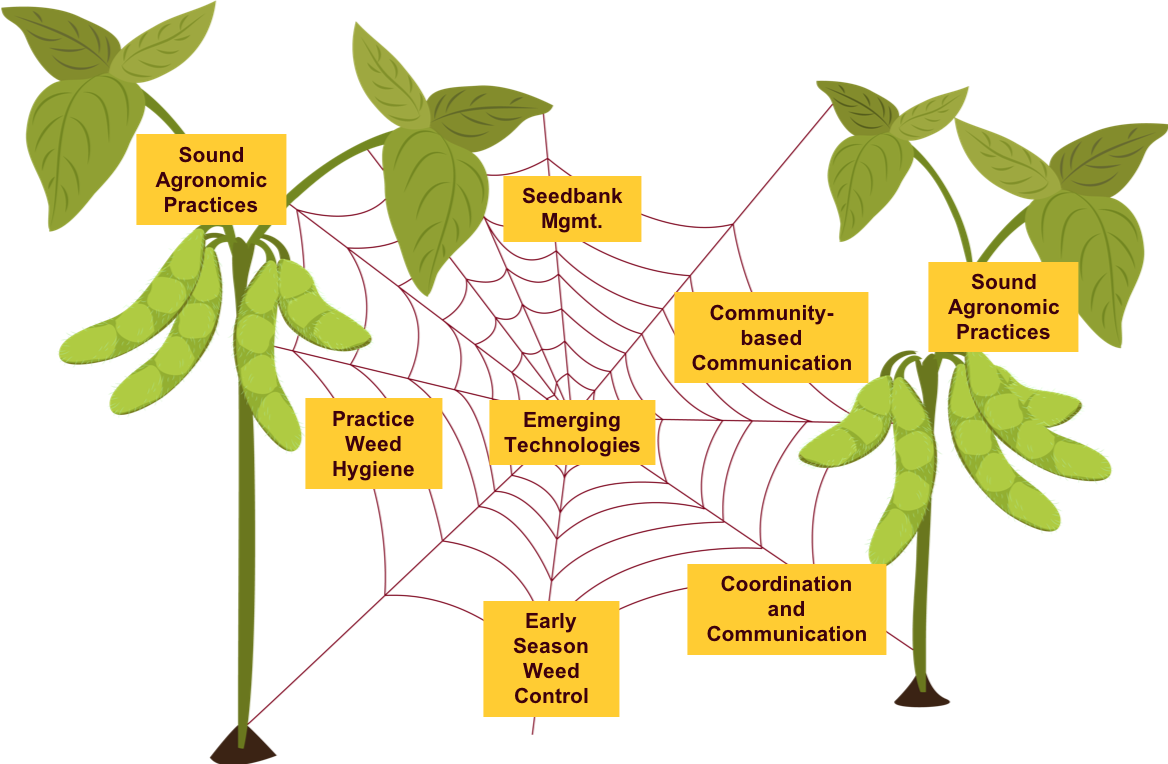
Integrated weed management tactics can help control herbicide resistance to Palmer amaranth and other agricultural weeds. (Credit: Jeff Gunsolus)
Screening native seed mixes for noxious weeds
Each year, the Minnesota Seed Regulatory Program inspects 1600-2000 samples to ensure compliance with state seed law. MITPPC-funded researchers are currently developing new genetic markers to better identify Palmer amaranth in seed mixtures. Their work will dramatically increase the sample volume seed analysts can test, improving accuracy while lowering overall cost.
MDA Seed, Weed, Hemp & Biotechnology Program Supervisor Denise Thiede discusses Minnesota seed labeling guidelines at the video link. Or try your hand at visually identifying amaranth seed species below (no cheating!)
Watch Denise's presentation on YouTube (18 min)
Watch the #PalmerSummit at home
You can catch the entire presentation lineup at home via our YouTube channel. Check out the full playlist here, including presentations not covered in this post, and keep sharing your thoughts on Twitter using the hashtag #PalmerSummit.
Questions or comments on any of these issues? Please contact us.
Quiz: Can you find the Palmer amaranth seeds?
You're seed analyst for a day – which of these Amaranthus species is invasive Palmer?
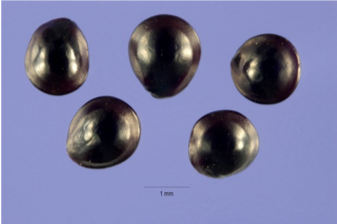
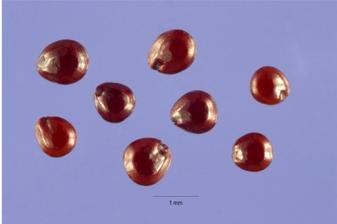
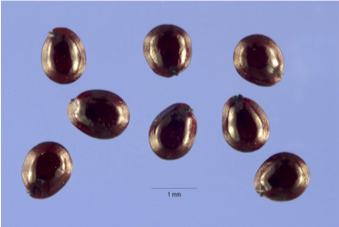
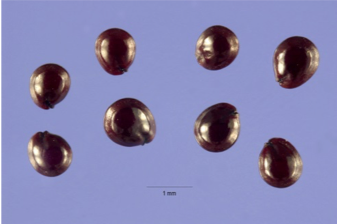
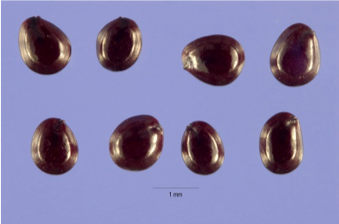
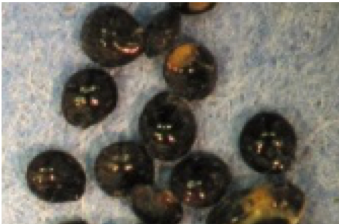

Palmer amaranth
(Amaranthus palmeri)

Pigweed amaranth
(Amaranthus retroflexus)

Green amaranth
(Amaranthus hybridus)
